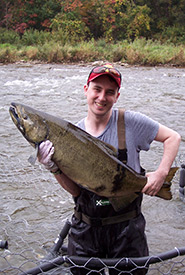Learning to listen: Bringing students closer to nature
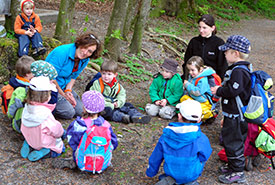
A teacher conducts a lesson in the forest (Photo by the Nature Office for the International Day of Forest Kindergarten)
Children and young students face a world that competes for and demands their attention every second of every day. Teachers face an even more daunting task, as they work to hold their students’ attention while educating and nourishing their developing minds. How, then, can we instill the value and importance of the natural world in a generation constantly bombarded by an electronic one?
A different kind of homework assignment
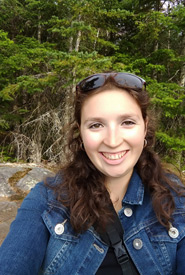
Kaitlin Calla (Photo courtesy of Kaitlin Calla)
Kaitlin Calla is a Grade 5 teacher and a passionate camper, hiker and student of biology. Taking a break from the traditional book reports and writing assignments she usually assigns her language class, she has instead introduced her students to the Nature Conservancy of Canada’s (NCC’s) Nature Talks Podcast as a means to educate her students about some of Canada’s unique ecosystems.
“I like the fact that it's Canadian content, and that I can use it to teach them about what is happening in their own backyards,” she explains. The podcast series visits six NCC properties across the country and describes some of the important conservation work being done at each.
Related blog posts
The students were asked to listen to three of the 20-minute podcast episodes and then answer questions about what they learned from each. Kaitlin said that her students took to the project right away. “Grade 5 students are naturally curious, and I found that the podcast generated immediate interest and discussion. I even overheard a few students sharing facts and talking about the ecosystems and species in the hallway outside of class. That kind of excitement and continued engagement is what I strive for in my lessons.”
Speaking their language
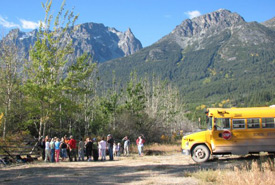
Students at Tatlayoko birdbanding station in BC (Photo by NCC)
A child’s curiosity is an important and powerful tool in development; it requires constant nourishment and encouragement. By exposing children to the natural world around them and generating discussion about important topics, even at a young age, it is possible to engage their curiosity. This curiosity with the natural world can lead to a passion for environmental and ecosystem conservation that they carry with them for the rest of their lives.
I spoke to Kaitlin about children’s natural curiosity and inspiring younger generations to learn more about conservation and ecosystem science. “In everyday life, it’s very easy to encounter wildlife species, such as raccoons, and write them off as pests. But I feel that the more you know about something, the more likely you are to recognize its value in the natural world and want to conserve it,” she says. “That said, accessibility is important. I teach to a variety of different reading levels in my class, and it is important to present a lesson that is easily consumed by all 26 students. That is why the podcast format works so well, and why I didn’t hesitate to bring a topic like nature conservation into my language class.”
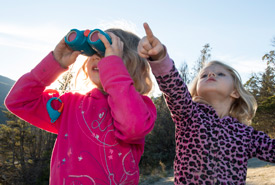
Kids explore the Dutch Creek Hoodoos (Photo by Steve Ogle)
Kaitlin went on to explain that her school board is looking to integrate more interdisciplinary learning into its lesson plans, combining science, writing and audio/visual skills to help make lessons accessible to children who learn in different ways. By providing opportunities to connect more students with the natural world, it is possible to re-integrate an electronics-focused generation with the ecosystems around them.
If we hope to reconnect a generation that is increasingly recognized as being disconnected from the natural world, conservationists and educators must be willing to speak to their audience in a language that is easily understood by all.

